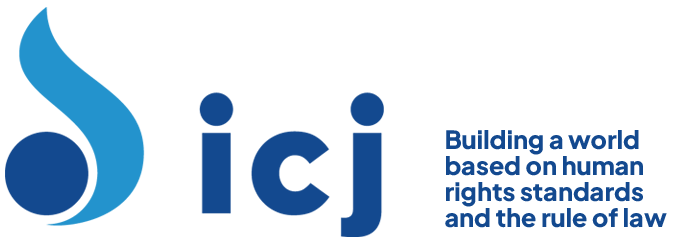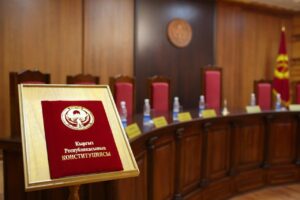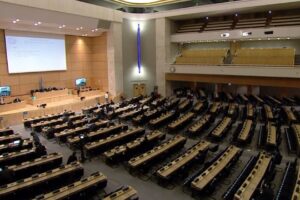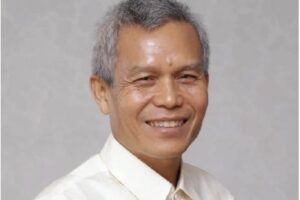III. Freedom of religion or belief and equality between men and women
B. General observations on the role of freedom of religion or belief in the field of equality between men and women
3. Practical relevance of a holistic approach
35. Being frequently caught between gender stereotypes and stereotypical perceptions of their religious identities, many women from religious minorities feel exposed to the expectation that they have to choose one of two seemingly contradictory options: allegedly, they can either emancipate themselves by more or less abandoning their religious tradition, or they can keep their religious heritage, thereby forfeiting their claims to freedom and equality. Such an artificial antagonism, however, fails to do justice to women’s multifaceted realities, experiences, challenges and wishes. Any assessment of presumed or factual conflicts in this area should therefore take seriously the complexities of women’s life-worlds and appreciate their creative potential.{{6}}
C. Typological analysis of challenges in the intersection of freedom of religion or belief and equality between men and women
3. Gender and sexuality in school education programmes
53. Within the broad field of education, school education warrants specific attention. Besides providing a place of learning in which students can realize their right to education, the school is also a place in which authority is exercised (see A/HRC/16/53, para. 23). In particular, children of a tender age typically experience the teacher as a person wielding a high degree of authority. In addition, students may be exposed to pressure from their peers. For some students, particularly those belonging to ethnic, linguistic, religious or other minorities, this harbours the risk of creating a vulnerable situation. Parents from minorities may furthermore fear that the school could alienate their children from the family, including from the religion of their family. All of this calls for systematic attention with a view to dispelling fears, building trust, avoiding risk situations and overcoming the vulnerable situations of students and their families.
54. From a normative perspective, school education falls in the focus of a number of human rights, including the right to education, minority rights, equality between men and women, and freedom of religion or belief. As a subcategory to freedom of religion or belief, article 18, paragraph 4 of the International Covenant on Civil and Political Rights demands respect for the “liberty of parents and, when applicable, legal guardians to ensure the religious and moral education of their children in conformity with their own convictions”. This provision should not be interpreted in isolation but should be read in conjunction with article 5 and article 14, paragraph 2, of the Convention on the Rights of the Child, which require parents and legal guardians to provide appropriate direction and guidance “in a manner consistent with the evolving capacities of the child”. With regard to adolescents, the Committee on the Rights of the Child emphasizes that States parties should provide them “with access to sexual and reproductive information, including on family planning and contraceptives, the dangers of early pregnancy, the prevention of HIV/AIDS and the prevention and treatment of sexually transmitted diseases”.{{11}} The Committee furthermore insists that adolescents should “have access to appropriate information, regardless of […] whether their parents or guardians consent”.{{11}}
55. School curricula or other programmes addressing gender or sexuality issues have sometimes triggered resistance on the part of parents who fear that this might go against their moral convictions. Quite frequently, such opposition results from religious or other conscience-based positions, thereby possibly becoming an issue under freedom of religion or belief. There is no general recipe for handling such conflicts in practice. Each individual case requires a careful analysis of the specific context and of the human rights norms invoked by the conflicting parties. One should bear in mind that neither the right to education, including education “in the spirit of … equality of sexes”,{{12}} nor the right to freedom of religion or belief can be dispensed with, since both have the status of inalienable human rights. It is always advisable to try to prevent or de-escalate conflicts, for instance by training teachers, dispelling mistrust and misunderstandings and establishing outreach programmes towards particular communities.
Link to full text of the report: Report-SRReligion-Interim report-2013-eng
[[6]] One may assume that the same is true for individuals from the lesbian, gay, bisexual, transgender and intersex community, many of whom are religiously interested and practising, which is a reality so far largely unexplored.[[6]]
[[11]] Committee on the Rights of the Child, General Comment No. 4, CRC/GC/2003/4, para. 28.[[11]]
[[11]] Committee on the Rights of the Child, General Comment No. 4, CRC/GC/2003/4, para. 28.[[11]]
[[12]] Article 29, para. 1 (d), of the Convention on the Rights of the Child.[[12]]




